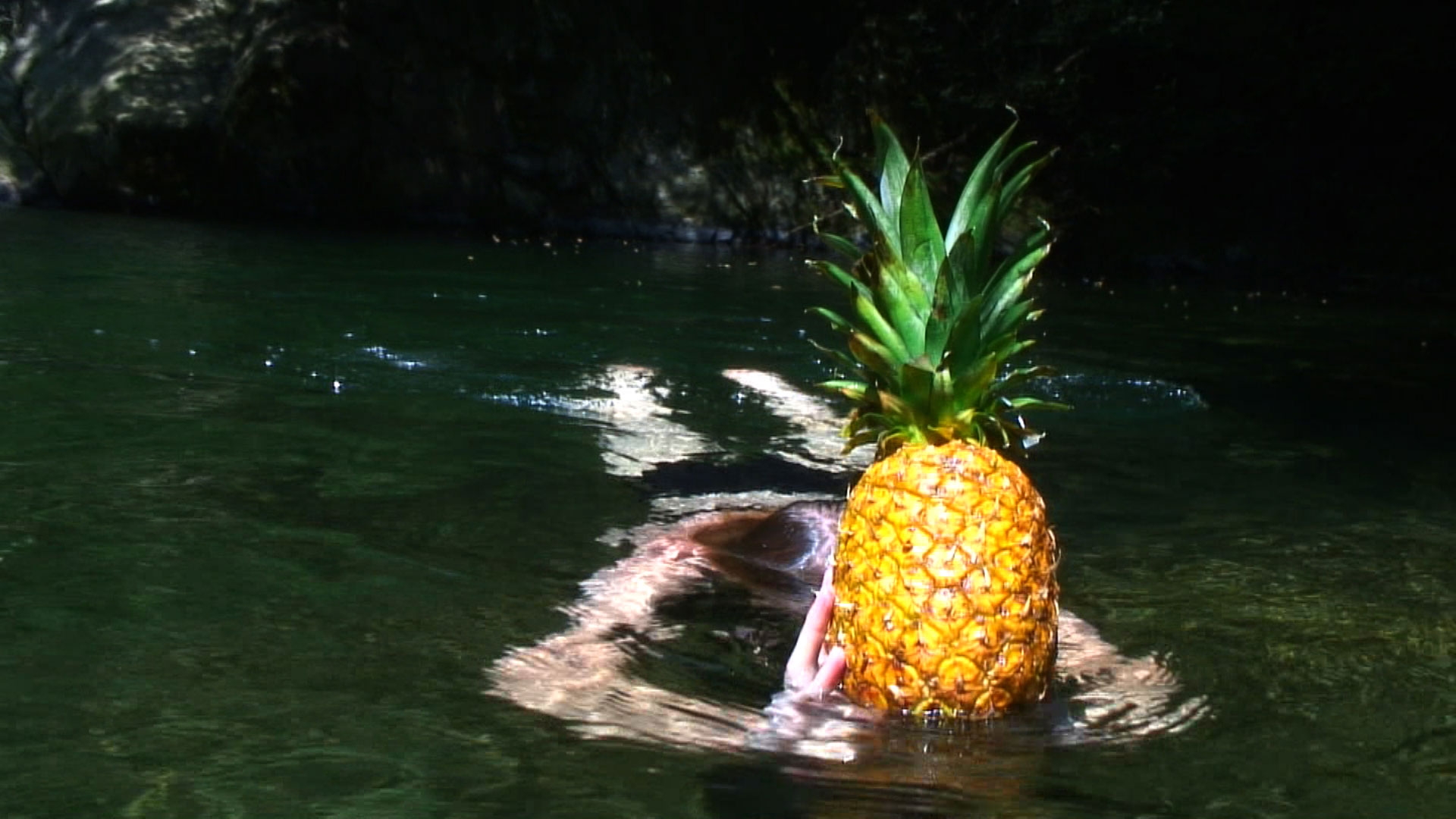The lengthily titled Farfromwords: car mirrors eat raspberries when swimming through the sun, to swallow sweet smells is the result of Laure Prouvost’s residency in Italy as the fourth recipient of the Max Mara Art Prize for Women. Swallow (all works 2013), the central video of this two-part installation, is a meditation on pleasure, seen through the eyes of a hypothetical aesthete on the Grand Tour. Housed within a panoramic grotto of photographic collages that echo its Arcadian location, the film places us somewhere in Italy, by a secluded pond, and the images come at us quickly, as though designed to induce Stendhal syndrome: nude women bathing; raspberries crushed underfoot; a breast pushed into a peeled fig; a pineapple emerging from the water, Excalibur-style; fleeting shots of birds; cutaways to shirtless youths; palm fronds waving against azure sky.
The goal, perhaps, is to offer pleasurable images rather than images of pleasure: it’s their unfolding that pleases, not what they depict. This is consolidated aurally, sounds functioning as serifs, crisply completing each shot: the uncorking of a bottle, the snip of scissors, the sharp intakes of breath that punctuate the ten-minute montage. We rarely see anything for more than a second, with Prouvost’s childlike voiceover addressing us sotto voce: “This image is undressing you… You drink this image…” Her laconic commentary has become a signature that some dismiss as French kookiness, but when sparingly used, its cadence augments the character of her image presentation, which is both votive and throwaway. Phrased in the second person, it also anticipates our consumption of the work, making it rhetorically as well as sensorially seductive.
Once you’ve unshelled Farfromwords’s filmic centre, however, the rest feels like a husk. The collaged walls of the grotto, interspersed with plasma screens, do little more than parlay Swallow’s erotic content into something more sexual. The sculptures on the gallery walls (there are ten, all untitled) present raspberries on wing mirrors fixed to scraps of car doors. The show’s prolix title asks us to imagine the fruit being ‘eaten’ by the mirrors. Such animism is better explored through the moving image; sculpture’s dumb literalness negates the alimentary metaphor.
Six additional works, Untitled (Relics), occupy the rear gallery, each presenting an object on a shelf alongside a caption. Next to an orange we read: ‘Under the skin of the orange the flesh has turned pure gold.’ The fantastical assertion recalls Michael Craig-Martin’s An Oak Tree (1973) – in which the artist claimed to have turned a glass of water into an oak tree – but its fairytale register adds satirical purchase: it’s as though a work of seminal Conceptualism has been workshopped with schoolkids. The Relics suggest interesting developments are afoot, but they are only partially realised here. Prouvost is at her best when seeing the world through a camera; her objects feel like inert props that merely ‘reference’ the films.
This article was first published in the Summer 2013 issue.
